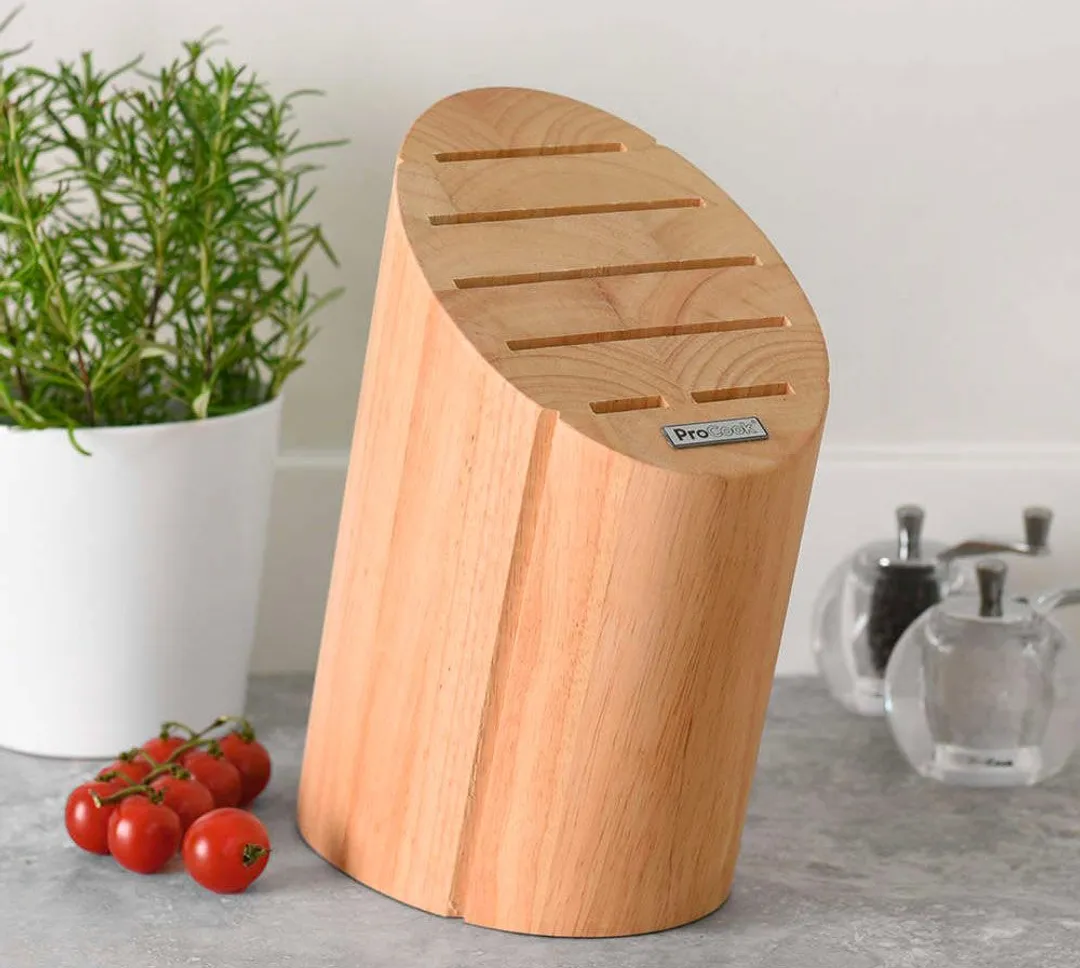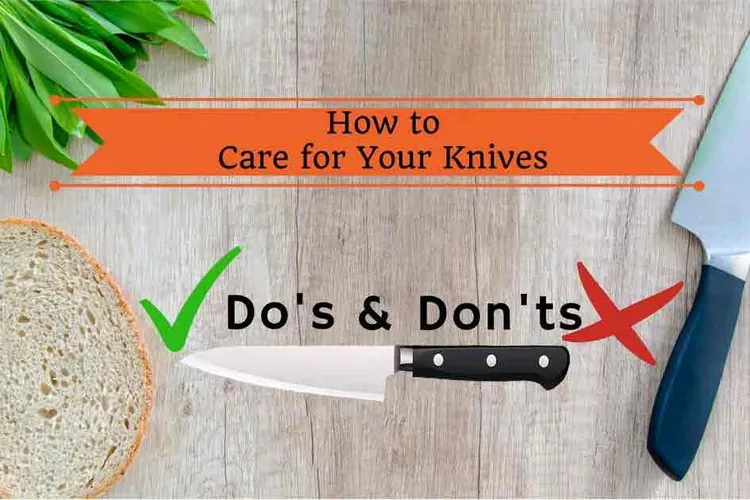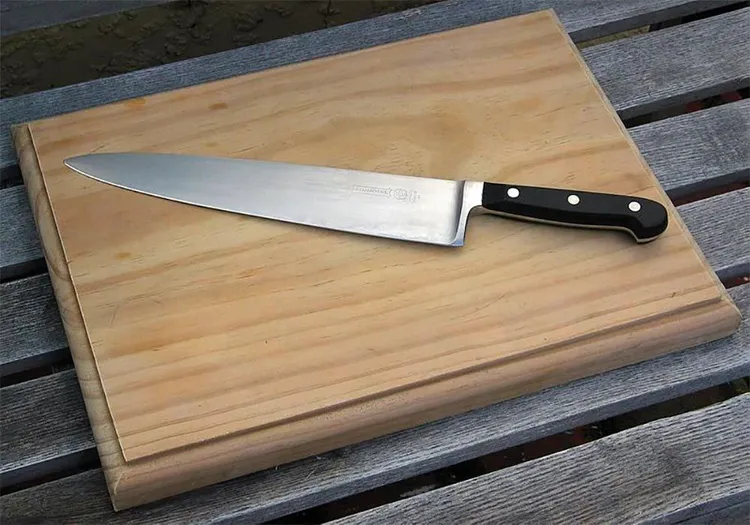Our recommendations are made independently through Research & Testing. We may receive commissions from purchases made via our links.
How to Clean a Knife Block: Complete Guide, Tips, and FAQ
Learn how to clean your knife block in just a few easy steps to avoid it becoming a breeding ground for germs.
A lot of people don’t even think about cleaning their knife blocks. After all, if the knives are clean when you put them in, why should their accommodation get dirty?

Knife blocks host hidden yeast, mold, and dust that can make you ill without even knowing the cause. That’s why you should learn how to clean a knife block properly.
Read the article below to learn useful tips on keeping your knife block clean and free of germs and mold. We’ll also answer some of your top questions.
How to Clean Your Knife Block
What you need
- Bleach/ vinegar/ hydrogen peroxide
- Small brush
- Sponge
- Dish soap
- Soft clean cloths
Instructions
- Remove your knives.
Take your knife set and culinary tools out of the block carefully, one by one. Do not try to shake them out of the knife block. That could be dangerous to you because the knives could fall out and cause harm.
It’s also damaging to the delicate knife edges as they hit against each other or whatever surface they drop onto. A kitchen knife, however tough its edge is, will suffer from contact of that nature.
2. Dry-clean inside the knife block.
Once all the knives are removed, turn your knife block upside down and give it a good shake to remove the possible crumbs and dust inside. Afterward, rest your knife block on one side and use a small brush to carefully scrub inside the knife slots. That way, you can get rid of any lodged crumbs or debris.
3. Clean the knife block on the outside.
Use your sponge, dish soap, and water to scrub your knife block on the outside. Remember to scrub your knife block gently if you don’t want to scratch it.
4. Remove all the moisture.
Don’t wash your knife block in the sink because it can absorb too much water and swell. Instead, after you’ve cleaned the outside of your knife block, use a damp soft cloth to wipe the dish soap and gunk.
5. Let the knife block dry.
Pat dry your block with a cloth and allow it to dry at an airy place with low humidity for at least 8 hours. Make sure it’s completely dry before moving on to the next step.
6. Bleach the bacteria out of your knife block.
Add one teaspoon of bleach to 32 ounces of water. Damp your scrub brush inside this solution and gently clean your knife block. Then, use your smaller brush to get inside the slots.
7. Wipe and dry your knife block.
Use a damp cloth to clean the bleach residues from your knife block. Again, remember not to put your knife block under running water. Use a dry cloth to wipe your knife block and let it air out for at least twelve hours.
8. Reinsert the knives.
Your knife block is completely clean now, so you can put your knives back into their home.
Pro tips:
- Also, after you’ve initially removed your knives, knife sharpener, and other culinary tools from the block, give them a good scrub in hot water. This ensures you won’t be putting any germs or debris back into your nice, freshly clean knife block. Make sure they’re perfectly dry before putting them back inside their home.
- Remember that you’ll have to let your knife block air dry before using the bleach solution. That’s why it’s a good idea to start step 1 in the morning so that you can continue with step 6 in the afternoon.
- Use a vinegar solution or hydrogen peroxide instead of bleach if you can’t stand the smell or want a more natural option.
- If you have a moldy knife block, use sandpaper instead of a scrub brush to clean it better.
- Wash your knives carefully after each use and make sure they’re completely dry before placing them in your knife block.
- Consider a magnetic knife holder if you want less hassle when it comes to cleaning your knife storage.
FAQ
How Do You Clean a Universal Knife Block?
If you have a Kapoosh knife block, take off the rods and wash them by hand or in your dishwasher. Remember not to take apart the knife block completely. Clean the inner shell with mild soap and a soft cloth two times per year. Let your knife block dry for at least 12 hours before reassembling it.
How Do You Properly Clean Your Knives?
Never wash your knives in the dishwasher because they can get dull faster and their handles can split with time. The best solution is to wash your knives in warm and soapy water immediately after use when the food residues haven’t dried off completely.
Also, remember to dry your knives carefully before placing them back in your knife block.
Are Knife Blocks Sanitary?
Your knife block isn’t sanitary unless you clean it often and thoroughly. According to the National Sanitation Foundation, your knife block is the perfect haven for mold and yeast. That’s because your knife block probably sits on your kitchen countertop where it can easily get wet or accumulate crumbs. In addition, if you place moist knives into their wooden support it can encourage mold.
Do Knife Blocks Hold Bacteria?
Unfortunately, knife blocks can hold bacteria if it develops build-up of moisture and crumbs. Bacteria thrive in damp, dark places. That’s why it’s important to clean your knife block and knives regularly.
How Do You Sanitize Wooden Blocks?
If you want to avoid bacterial buildup, sanitize your wooden block frequently with vinegar. Make a natural solution by mixing half a cup of vinegar and one cup of water. Apply this non-toxic mixture onto your knife block with a soft cloth or a spray bottle. Allow your knife block to dry completely before reinserting the knives.
Don’t worry about the vinegar smell. It will wear off as your knife block dries.
Conclusion
Cleaning your knife block regularly is essential if you want to keep your kitchen bacteria-free. Remember to use soft brushes and gentle motions and scrub your knife block carefully both inside and out.
It’s also important to keep your knife block clean. As such, only place clean, dry knives inside and make sure no crumbs fall into your knife block.
If you have other tips, we’re happy to hear them. Our comment section is right below!
Authors
Luna Regina is an accomplished writer and author who dedicates her career to empowering home cooks and making cooking effortless for everyone. She is the founder of HealthyKitchen101.com and HealthyRecipes101.com, where she works with her team to develop easy, nutritious recipes and help aspiring cooks choose the right kitchen appliances.






